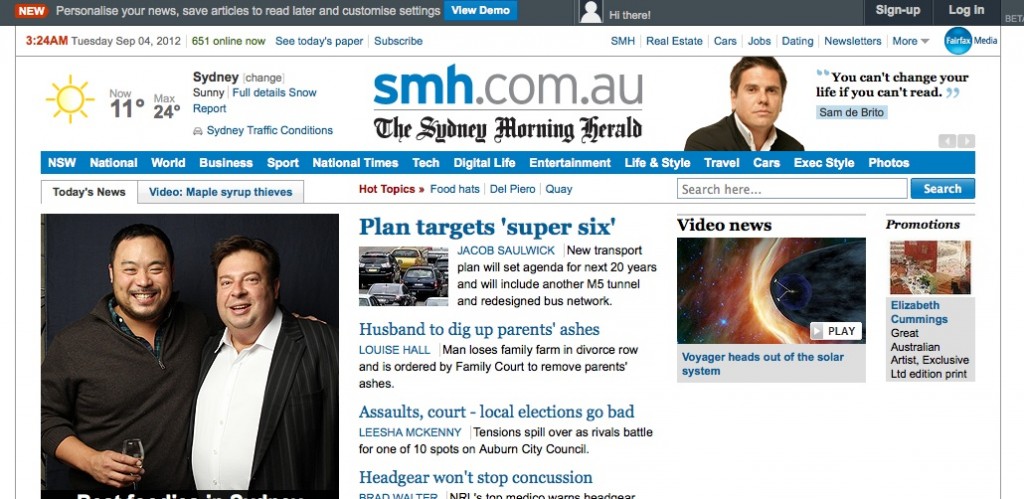Earlier this year Australian publisher Fairfax Media announced what it described as ‘landmark’ events, including the introduction of a digital-first editorial strategy in Sydney, Melbourne and Canberra, as well as a paywall in front of its Metro Media digital content.
The strategy followed a 12-month review, which concluded a need for “decisive action to restructure our business model to better reflect audience and advertising trends”.
This included cost cutting measures such as the loss of 1,900 members of staff in a bid to make savings each year of $235 million AUD, within the next three years, according to a report by one of Fairfax Media’s metropolitan titles the Sydney Morning Herald.
At the time chief executive of Fairfax Media Greg Hywood said:
No one should be in any doubt that we are operating in very challenging times. Readers’ behaviours have changed and will not change back. As a result, we are taking decisive actions to fundamentally change the way we do business.
The changes announced today have been selected after considering the merits of a full range of structural alternatives, including a demerger. The package of strategic initiatives is bold, and several are difficult, particularly as they will impact on some of our people.
However, we believe that they are in the best interests of Fairfax, our shareholders, and ultimately the majority of our people. They are necessary to ensure Fairfax retains its position as a leading independent media company and a key voice in our markets.
It is now a couple of months since the announcement was made and on Monday (3 September) Hywood spoke at the World Editors Forum in Kiev in detail about the restructure, and where it is hoped it will take the company in the next few years.
Hywood said the company was facing the same external pressures and declines as other media business and decided to respond by building a “platform or technological-agnostic” model.
And the company is “within reach of a very different profitable model for journalism focused primarily on digital distribution”, he said.
During his presentation to the conference he also called on other news outlets to “make the calls, and make the calls now”, in order to develop a “dominant digital news position”.
At Fairfax Media such big calls have included a move for two of its metropolitan titles – or mastheads as Hywood refers to them – SMH and The Age, to a compact format next year. The company is also closing down two large printing plants and moving the work to its regional plants.
In the newsroom there has also been a “revolution” he said, with the newspaper placed “at the end of the process”. Meanwhile sales teams are focused on offering “one media solution for each advertiser”, rather than going in with individual solutions per platform.
And while Fairfax Media is making these significant changes to its business, Hywood thinks other news organisations should also be reassessing their situations.
One day… it won’t be profitable to print any more. Then what you do is turn the digital tap on, what drops out is the entire costs of the manufacturing business underneath it.
As outlined in the ‘Fairfax of the Future’ strategy earlier this year, the company believes that implementing the changes it is will give it “significant flexibility to adjust the business model to reflect audience and advertising trends” should they change in the future.
But “you’ve got to make the big calls now”, he warned.
